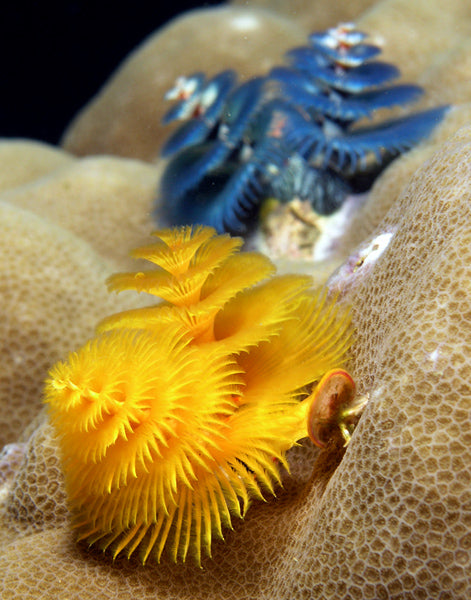For those who celebrate Christmas, the tree decoration is done once a year, but in the world’s tropical seas there are magical creatures that exude Christmas spirit all year long. They look like festively decorated miniature fir trees and are therefore commonly known as Christmas tree worms. Actually, the beautiful underwater “pine trees” are just the tip of the iceberg for this worm. Two thirds of the body of Spirobranchus is hidden in a tube of calcium carbonate within a coral reef.

The worm builds its tiny home using its own secretion and can live there for up to 40 years. Adjust the growth rate of your bunkers to match the growth of the coral and maintain the opening which allows its brightly colored tentacles to extend from the reef, providing the only obvious sign of the worm’s presence. Each worm has two tentacles known as radioles. Radioles are generally just over an inch (2.5 cm) long and come in a wide variety of colors, including blue, orange, yellow, white, red, and pink. In addition to serving as external gills, they are also covered with hair-like cilia that help the filter-feeding Christmas tree worm trap plankton and pass it into its mouth for snacking.

Despite their variety of colors, all Christmas tree worms belong to one species, Spirobranchus giganteus. They are widely distributed in the tropical and subtropical seas of the Earth, especially in the Caribbean and the Indo-Pacific. They prefer shallow water and typically live at depths between 10 and 100 feet (3-30 meters). Thanks to their vivid colors and shallow habitats, Christmas tree worms are a common sight for snorkelers and snorkelers.

Christmas tree worms are also known to be skittish, quickly retracting into their tubes when they sense movement in the water. They can be sealed using an operculum, a specialized body structure that can be opened and closed like a door. The worms slowly reemerge about a minute later, making sure the shoreline is clear before fully spreading their crowns.

Although there are male and female worms, like most polychaetes, Christmas tree worms do not mate. Instead, they engage in external fertilization. Males and females drop their sperm and eggs into open water without leaving their excavated tubes. Once the spermatozoa fuse with the eggs, fertilization takes place. Fertilized eggs hatch into larvae in a matter of hours. The larvae then settle on the coral reefs and begin to build their own little tubes. Interestingly, the baby worms seem to know which corals are best suited to become their future homes. Some worms in the genus Spirobranchus prefer certain species or types of coral, typically less aggressive. By the way, corals also benefit. Researchers have discovered that Christmas tree worms can protect some corals from bleaching, suffocation by algae, and predation by animals like the crown-of-thorns starfish.

Overall, as a species, Spirobranchus giganteus appears to be doing quite well. Their populations are stable and do not present major threats, apart from local contamination or being removed from the wild by coral collectors.





